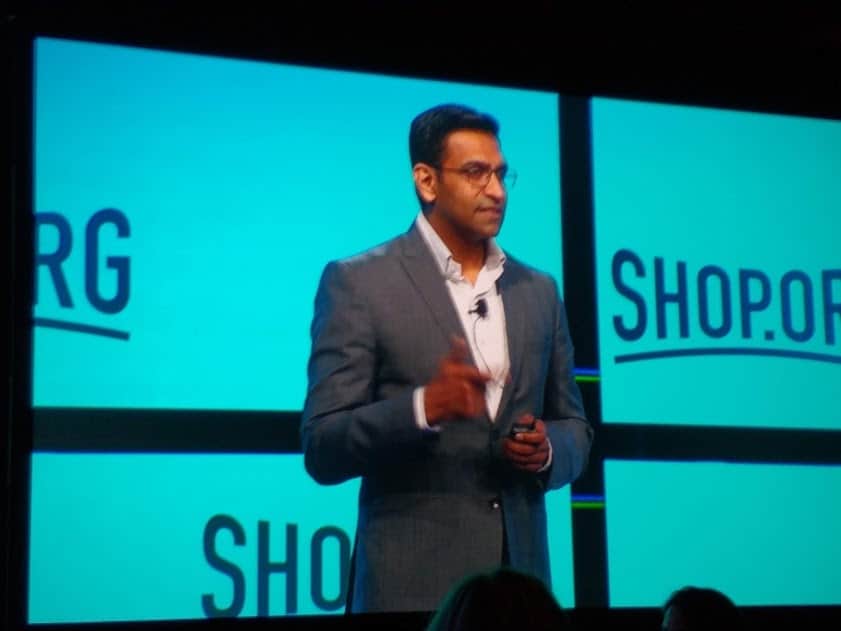Just in time for the holiday shopping season, Google is rolling out two image-focused ad formats that retailers can use to reach consumers at the initial stages of deciding what to buy.
One of the new ads is a video version of its Showcase Shopping ads, which is the search giant’s multi-image Google Shopping ad format. The other, called Shoppable Images, enables advertisers to attach shopping ads to published content created by a selected group of Google’s publisher partners.
The Showcase Shopping ads integrate YouTube videos into retail paid search ads for the first time and allow advertisers to create ads attached to pictures in the content of certain Google publishing partners. Google plans to roll out the new video ads with 500 advertisers this month in the U.S., U.K., France and Germany.
Showcase Shopping ads officially launched last October as part of Google’s AdWords advertising program. The ads allow advertisers to combine lifestyle and product images in a single ad that Google displays in paid search results for specific keyword searches. The ads are geared toward brands looking to attract the attention of shoppers still in the beginning of the shopping process, when they are likely to use broad search terms like “living room furniture,” the search giant says.
Google began testing Showcase Shopping ads in July 2016. Google says the ads generate a click-through rate that is 3.6 times higher than the average click-through rate for a Google ad. Showcase Shopping ads also receive 20% more conversion credit, as measured with a first-click attribution model. First-click attribution gives credit for a sale to the first click that brings a visitor to a website.
The initial results from tests of the new video Showcase Shopping ads conducted over the summer were also promising, said Kirnan Mani, Google’s managing director for retail on Thursday at the National Retail Federation’s Shop.org conference in Las Vegas.
Meanwhile, Shoppable Images will enable retailers to attach shopping ads to content on sites such as the fashion blog This Time Tomorrow.

Google executive Kirnan Mani.
When visitors hover over photos published on the blog, they see a message that says, “Shop This Style.” Clicking on the message leads to a shoppable search related to the image. The ads allow shoppers to move directly from admiring the fashion cues shown in a photo to shopping for items like the apparel they are looking at.
In Las Vegas, Mani said it’s important to reach shoppers regardless of where they are in the product-discovery process—which can sometimes take months and involve dozens of “touch points” online.
During a wideranging Shop.org presentation, Mani said Google, the biggest part of Alphabet Inc., sees itself as being an enabler of retailers and not a company seeking to be a retailer itself. That means helping retailers reduce friction any way it can.
“It’s about getting to the point of assistance,” Mani said. That requires retailers to know as much as possible about customers, including “remembering” the last purchase a customer made and providing relevant recommendations that consider consumers’ sizes and tastes, as well as using technologies like artificial intelligence and machine learning.
He also recommended retailers pay attention to mobile site speeds, referring to it as a barrier. He said the average load time for a mobile site is now 10 seconds.
Lastly, he said retailers with physical locations must work hard to integrate their online and store operations as closely as possible. “The true magic of omnichannel really happens behind the scenes,” he said. That involves using technology to develop a supply chain and internal information flow to support it. “You’re really allowing everyone within the company to focus on the customer,” he said.
“Brands are facing a new paradigm called moving from information to assistance,” Mani said.
To that end, he said, retailers are applying machine learning in three ways: Connecting with customers using the data the retailers have about them, driving actions by removing friction in the shopping and buying process and making everyone in the company responsible for customers by giving them the information they need.
“The fundamentals of retail have not changed,” Mani said. “Machine learning just gives you so many more possibilities to get to your goal in more ways than ever before.”
Favorite